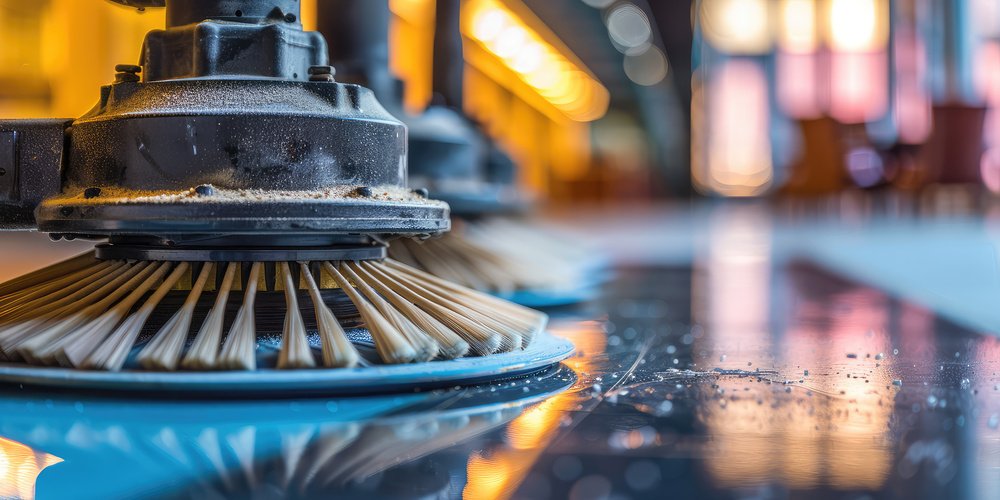Every industry has its tools of the trade. One of ours is the sweeper. A sweeper is the equivalent of a mechanized broom or dust mop. As it travels down a tile or hardwood floor, it sweeps and picks up dirt, debris, etc.
Sweepers come in a variety of sizes and styles. Some are manual while others are automatic. The question is this: why use a sweeper on non-carpeted floors when brooms and dust mops are available?
Sweepers Tend to Be More Thorough
As a commercial cleaning service, we have tackled everything from office buildings to industrial environments. We have cleaned private schools, medical offices, warehouses, and restaurants. From all our experience, we can tell that sweepers tend to be more thorough than brooms and dust mops.
A sweeper has mechanical brushes that rotate. Manual sweepers rely on those brushes to move dirt and debris into a hopper. Automatic sweepers can take things to the next level with small vacuums that suck up the dirt and debris collected by the brushes. Either way, sweepers tend to do a better job.
Covering More Area Faster
Another big plus for sweepers is that they allow you to cover a lot of floor area faster. Imagine trying to sweep a warehouse floor with a broom. You get nowhere fast. But with an automatic sweeper, the warehouse floor is as good as swept.
Sweepers are not just for warehouses, though. A manual sweeper is ideal for a conference room floor, long hallways in an office building, the reception area, and more. Wherever cleaners would normally use brooms and dust mops, a sweeper can be a more efficient tool.
How Sweepers Work
There are basically three kinds of sweepers: manual, walk-behind, and automatic. Manual sweepers are the most basic and least expensive. They require the user to push the unit in order to activate the brushes. Walk-behind sweepers can be manual or automatic. They tend to be larger than manual sweepers and may include a small motor to make operation easier.
Automatic sweepers are the workhorses of the sweeper team. These are fully motorized and self-propelled machines that can be either ridden or walked behind. They are ideal for the largest industrial floors. Some can even be used on parking lots and other outdoor areas.
Basic Sweeper Components
Commercial sweepers come with a variety of features. But all the extra features aside, there are four common components that make every sweeper work:
- Brushes – Sweepers have onboard brushes designed to lift dirt and debris. If the brushes are stiff enough, dirt that would never be loosened by a broom comes up easily. They are cylindrical, rotating toward the collection hopper. Some units have side brushes to pull dirt and debris away from walls.
- Dustpan – Dirt and debris picked up by the brushes travel through a dustpan on their way to a collection hopper. A dustpan reduces the amount of airborne dust a sweeper would otherwise create.
- Hopper – The box that collects dirt and debris is known as the hopper. Hopper size is in direct proportion to the size and style of a sweeper. Some of the biggest automatic sweepers come with fairly large hoppers.
- Filters – Sweepers also come with filters capable of catching fine dust particles as air travels through the machine. The filters are similar to what you would find in a commercial vacuum cleaner. Quality filters are absolutely necessary for indoor environments.
Commercial cleaning services like All Pro Cleaning Systems rely on sweepers to get floors clean. Sometimes you need a sweeper. Sometimes a broom or dust mop will just not do.



